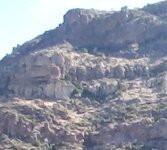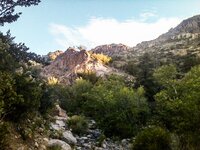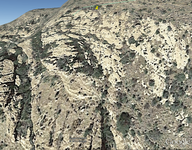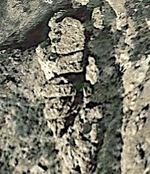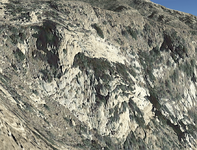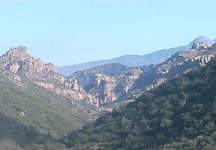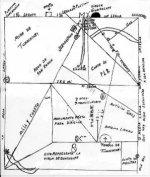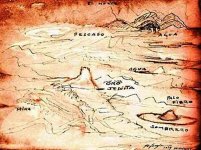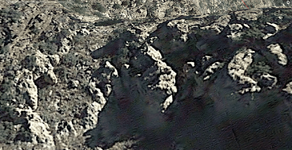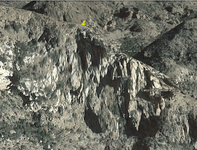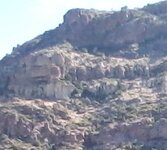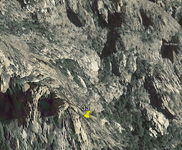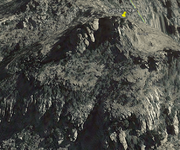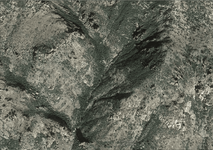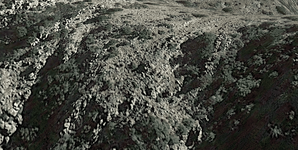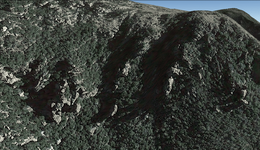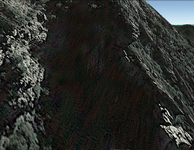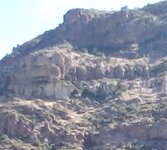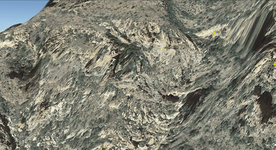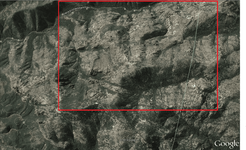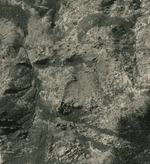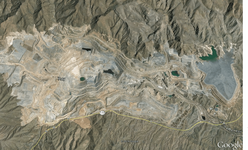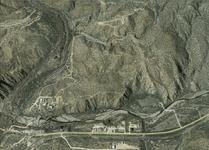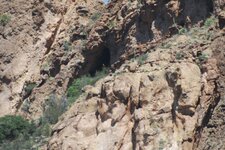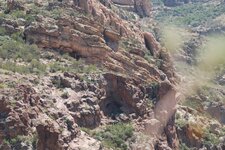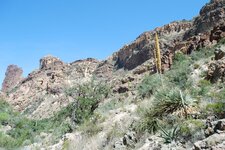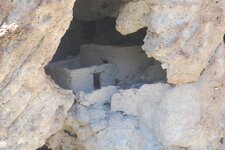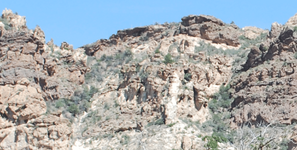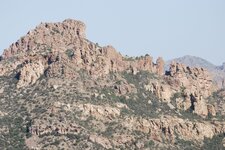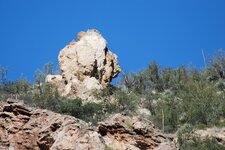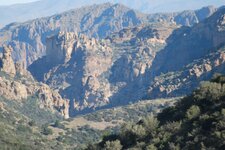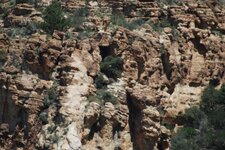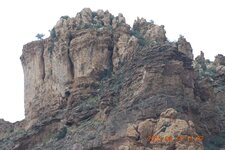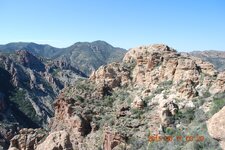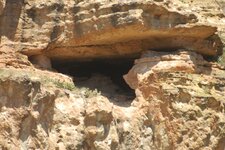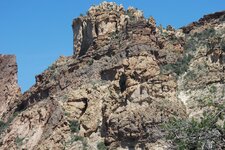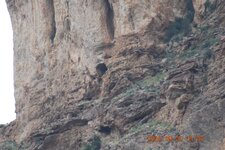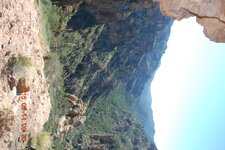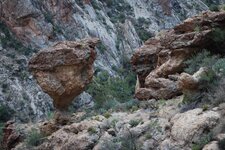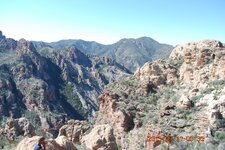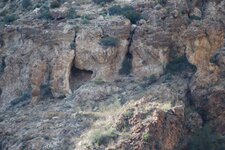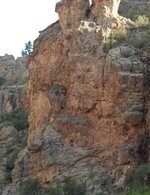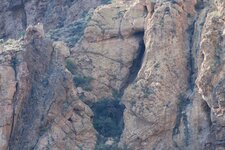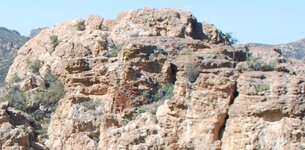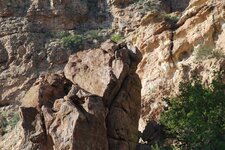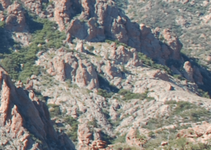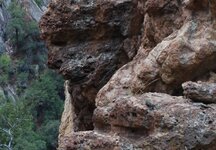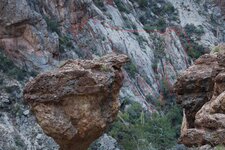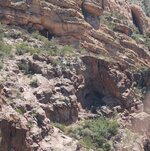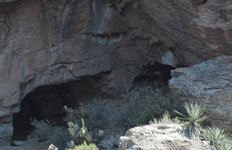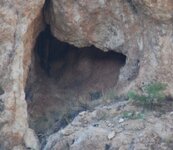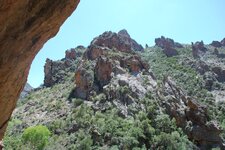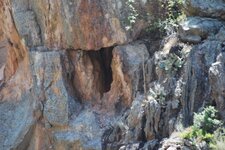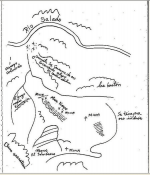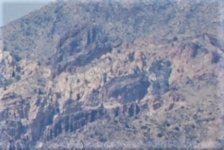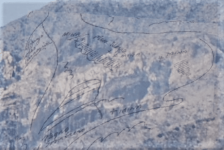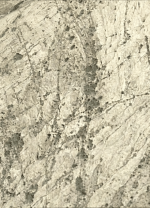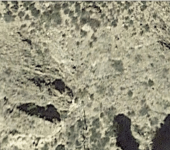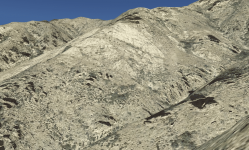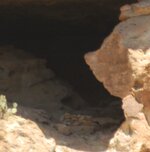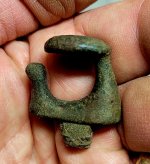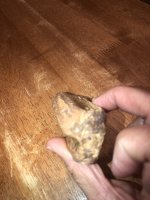sailaway
Hero Member
- Mar 2, 2014
- 623
- 815
- Primary Interest:
- All Treasure Hunting
- Thread starter
- #21
The Trick has been solved and the mines found.
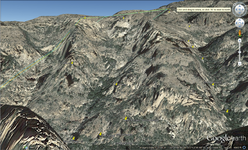
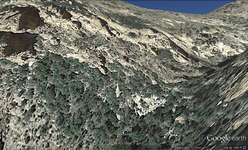
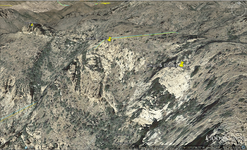
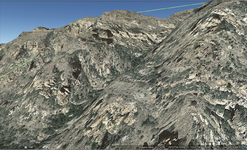
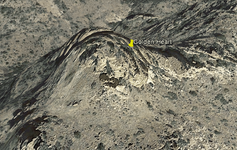
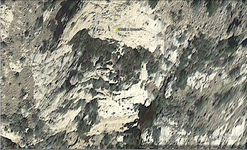
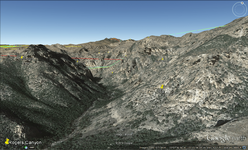
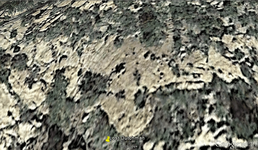
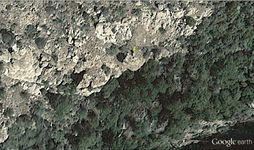
These are all part of the same vein. You can see the black sombrero that is on the hillside in the photo so we know Father Kino was here because he showed the hill with the Black sombrero on his map in the center of the Superstitions. To get into the main mine you walk under a rock carved into an Omega sign. I have actual Photos (they show the same things that Google does but the DOD dumb down what the public gets to see, I have over 5 years invested in research of this area, and have been there several times, and preparing to go back now to these spots for the documentation photos. The whole hillside of the Dutchman has the 8-n-P and is also carved into the Spanish word Espania for Spain Followed by an Arrow pointing at the Gold of the Dutchman Mine. Below the ESPANIA is the name MOLINA, and below that the words Coazone and Mapa cross. Behind the arrow to the south you will find stones carved to form F. KINO that taper from a large F to the smaller o. On the East side in large letters you can see the name PEDRO in Capital letters. This is not some small hill but a very large one, almost a mountain in its own right. Yes I have a picture to prove it and no you can not see it yet, waiting on Congressional protection of The National Trust for Historic Preservation.









These are all part of the same vein. You can see the black sombrero that is on the hillside in the photo so we know Father Kino was here because he showed the hill with the Black sombrero on his map in the center of the Superstitions. To get into the main mine you walk under a rock carved into an Omega sign. I have actual Photos (they show the same things that Google does but the DOD dumb down what the public gets to see, I have over 5 years invested in research of this area, and have been there several times, and preparing to go back now to these spots for the documentation photos. The whole hillside of the Dutchman has the 8-n-P and is also carved into the Spanish word Espania for Spain Followed by an Arrow pointing at the Gold of the Dutchman Mine. Below the ESPANIA is the name MOLINA, and below that the words Coazone and Mapa cross. Behind the arrow to the south you will find stones carved to form F. KINO that taper from a large F to the smaller o. On the East side in large letters you can see the name PEDRO in Capital letters. This is not some small hill but a very large one, almost a mountain in its own right. Yes I have a picture to prove it and no you can not see it yet, waiting on Congressional protection of The National Trust for Historic Preservation.
Amazon Forum Fav 👍
Last edited:


